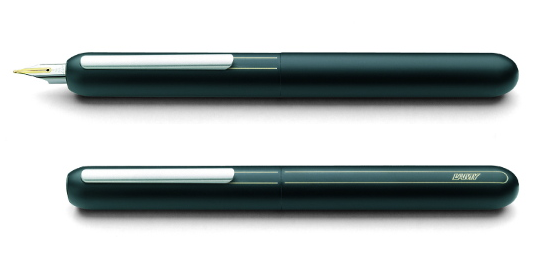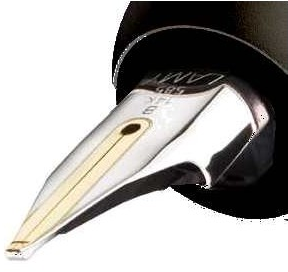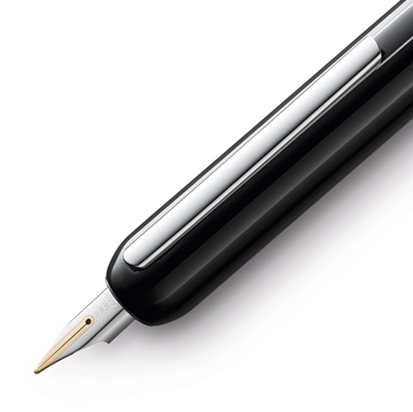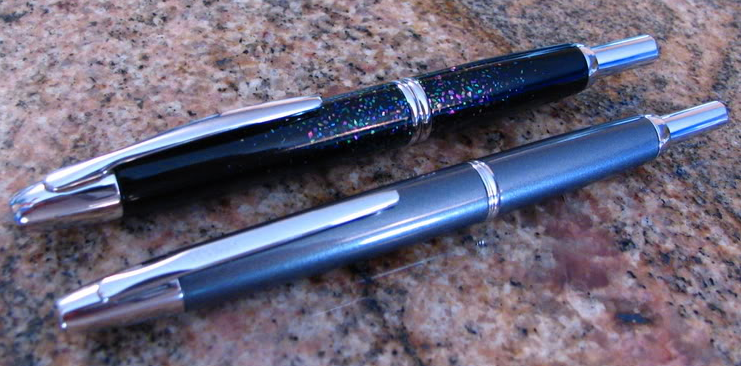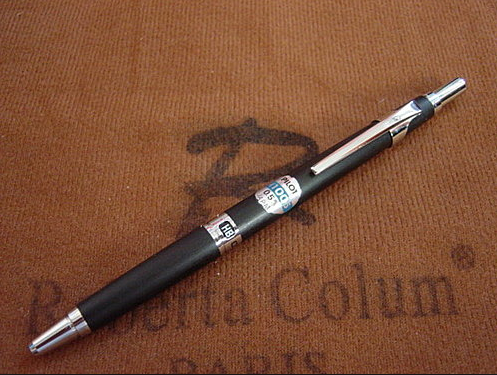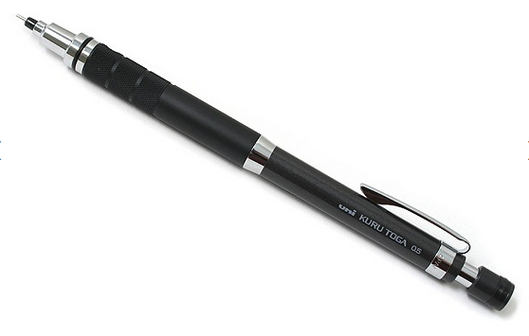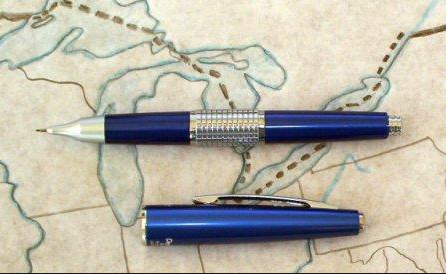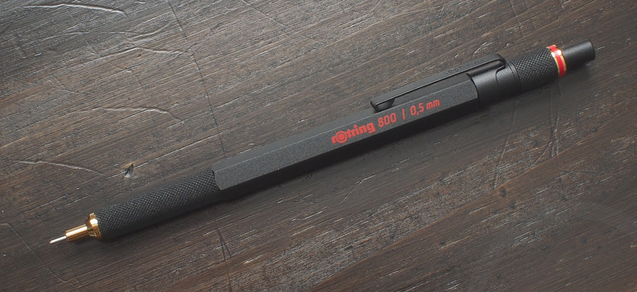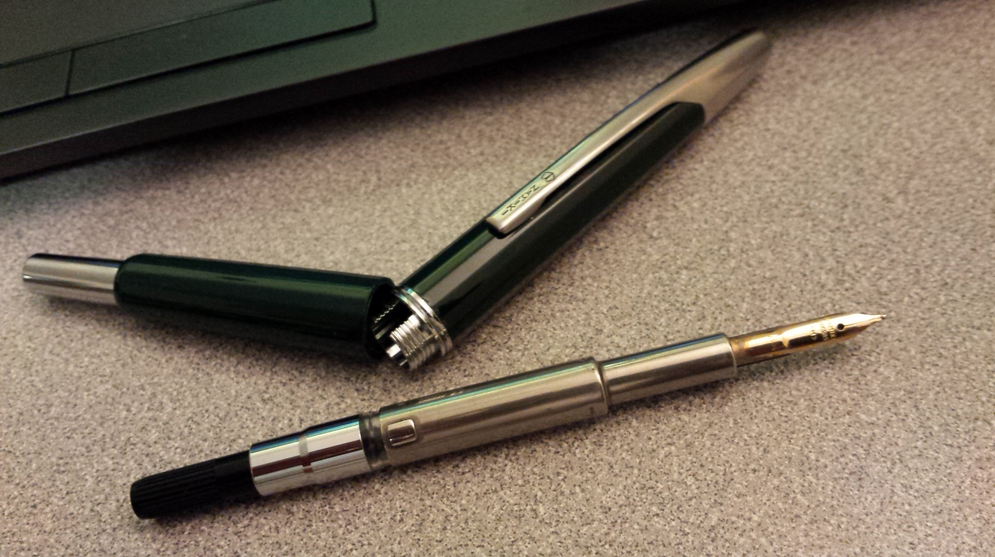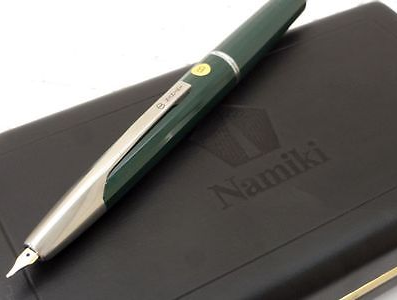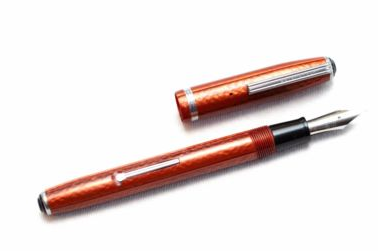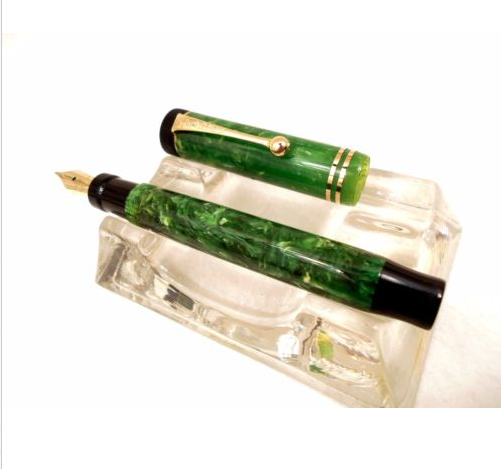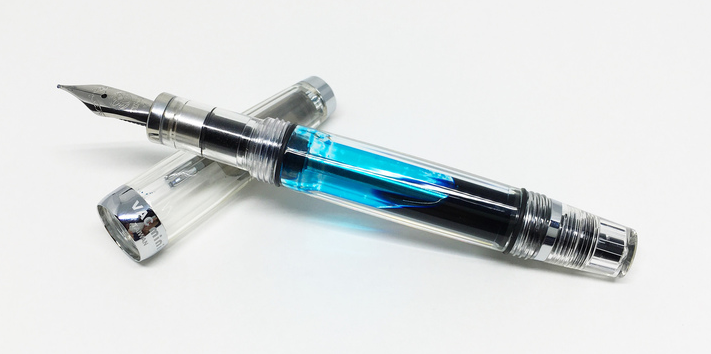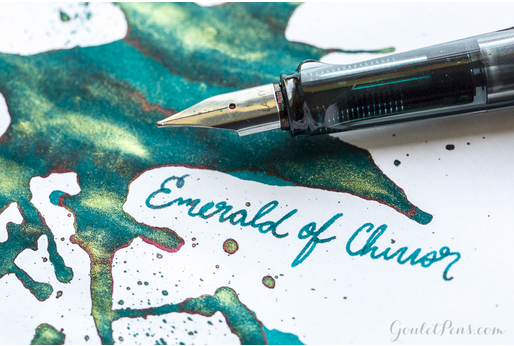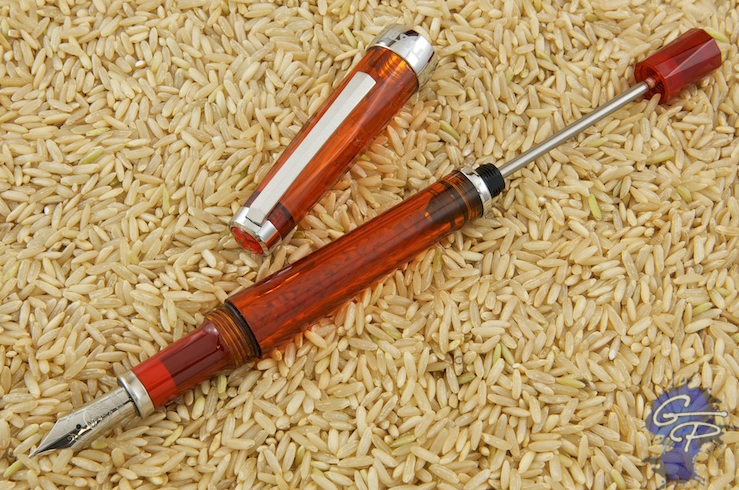Every Day Carry. But when you work in a home office, it’s more like EDUAMD. Every Day Use at My Desk. I’ve been using several different capless, or retractable nib fountain pens in a daily rotation, and I’ve come to some conclusions as to the one I prefer and why. Some reasons you may agree with, some you may not. But if you’re on the fence, you may find some information that helps you to make your own buying decision.
The candidates are:
The Pilot Blue Carbonesque using Diamine Syrah ink is very nice, but definitely heavier and more substantial than the Decimo. The nib on this pen was custom ground by Indy Pen Dance to their Daily Italic profile, and I really like it. This is a one-hand pen just like the Decimo, the difference in weight is noticeable. The clip is larger than the Decimo, but I have no complaints about it and it doesn’t get in the way (for me) while writing. My writing seems to improve when using this pen – I’m not sure why that is, but it happens every time I use it.
I like the Decimo too, the thinner clip and lighter weight are a noticeable difference between this pen and the others. The medium nib is, well, medium and very smooth even on less than great paper. The black Pilot cartridge ink is fine and works fine on the paper I use daily. This is a one-hand pen – you can pick it up and extend the nib with one hand and it’s ready to write. Very convenient. I have had no issues with the nib drying out while in rotation.
The Pilot Fermo is about the same weight as the Blue Carbonesque, but feels a bit thinner. I have Diamine Imperial Purple ink in this pen right now. The clip has a different shape, and is not a detriment at all. I think I prefer the twist mechanism over the click mechanism in the other two Pilots. Smooth, and the spring retracts the nib by itself once you rotate past the over-center point. Visually the Fermo has a much smaller cap than the other Pilots, so it does have a different look. The weight is about the same as the Pilot Blue Carbonesque.
The Lamy Dialog 3 is unique. I’ve had it about 2 weeks now and the nib is really nice. Very smooth right out of the box. No complaints there. I think I would be happier with a fine nib rather than the medium. That’s not a fault of the pen or nib. I will probably have the nib ground to a fine point and then I will enjoy this pen even more. The ball valve rolling out of the way just prior to the nib extending is still fun to watch, but it is definitely a two-hand task to make the pen ready to write. It may look different with the untapered cylindrical profile, but it feels good in the hand and writing with it is a pleasure. I have had no issues with the nib drying out after sitting for 3 days in the four pen rotation.
So for me, the decision was a tough one – these are all quality pens and I can say without reservation that you would not regret purchasing any of them. The final two candidates were the Blue Carbonesque with that wonderful nib, and the Fermo with the twist mechanism. But, for the way I use a pen on a daily basis the Fermo wins. I could just put the Daily Italic nib in the Fermo and have the best of both, but I think I’ll leave the medium nib in there for now. For a daily writer the medium nib is a great compromise.

This may be a bit telling, but I have ordered another Fermo, in dark green color with a fine nib. Looks like the rotation will go up to 5 days fairly soon.
Stay tuned for a review of the Pilot Fermo with a fine nib.

